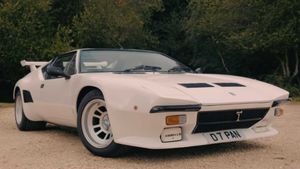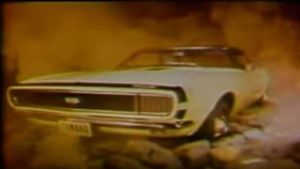Once a vision of cheap failure, the 2.0-liter 800 Coupé has struggled to gain merit in a crowded classic market. Here’s why it deserves some attention
Rover owners are wrong. Always, and about everything. No matter the profession, that grille-mounted Viking emblem exudes an image of failure to contemporary society. As a method of introducing yourself where first impressions count, piloting a Rover is superior only to stabbing someone.
Even in car circles, the British marque is met with considerable disdain. The same criteria apply to anything born of Longbridge post-SD1; bland, badly built and lacking refinement. To declare any Rover as a ‘young person’s car’ is to be met with laughter or a punch to the throat. Instead, the defunct brand remains associated with those waiting out retirement with daytime television, eagerly anticipating a visit from the Grim Reaper.
However, all this cynicism casts an unfair shadow on Blighty’s once-noble car maker. It’s not all bingo players and the stench of Old Spice. Far from it. A great swathe of enthusiasts across the globe enjoy, modify and restore Rovers of all ages. It’s a bit like Fight Club, but with lashings of Earl Grey and Rich Tea biscuits.
The majority of Rover’s pre-millennium offerings exhibit a range of plus points – especially in V6 form if you’re brave. It’s one of the classic motor scene’s best-kept secrets. Yet, even with such affection for the marque, one model eludes enthusiast regard. People simply never understood, loved or cared for the 800 Coupé.

With that dignified yet gruff front end, mated to a rear that boasts all the grace of a defecating hound, Rover's Coupé has always appeared awkward; like your grandfather masquerading as a Kardashian, or Nigel Thornberry in a ball gown.
Automotive historians also struggle to grasp the Rover 800 Coupé's original price tag. Back in the day, you could have purchased a neatly specified 4.0-liter Jaguar XJ-S, with change to spare, for the showroom cost of an 800 Coupé V6 automatic.
Whereas the Jaguar oozed style and pumped no-end of grunt from its AJ6 engine, Rover’s equivalent couldn't muster the oomph to yank skin off a rice pudding. The drivetrain was about as refined as Melissa Leo’s Oscar acceptance speech, and the 800 exhibited copious lashings of questionable plastic trim to boot.

Such an opinion can return to haunt the petrolhead, however. When presented with a faded Rioja Red example, even I – of a steadfastly negative opinion when it comes to the 800 Coupé – found the shape had aged rather well. Taking the 800 for a blast along the back roads, I was pleasantly surprised to find a manual gearbox, but was then horrified to discover that the engine wasn’t a V6. It was instead a four-pot; a weedy 2.0-liter M-series. It wasn’t even a turbo.
Catching sight of Rover’s slack-jawed attempt at Americana within the reflection of glass-fronted offices, it was time for an open-minded test drive.
The Rover 800 in America
The Rover 800 may appear like a sad attempt to capture American flare, but it was actually a full-blown effort. Specifications had originally been developed with North American buyers as the target audience; an attempt to cash in on the ‘British connection’ already exploited by Jaguar.
Should the Coupé have landed in American showrooms, it would have been sold under the new ‘Sterling’ brand, due largely to legal jargon following Rover’s previous US departure at the end of the 1970s. The re-launch was originally intended to rekindle interest in Rover’s output across the pond, but sadly it didn’t quite happen.

@embed>
<@embed'
Despite serious market research and thousands of project-based man hours, Rover abandoned the American market before the 800 Coupé was launched – leaving the British and other export markets with something of an oddity. Designed for a world it never saw, the Coupé simply never caught on. Sales figures were low and production didn’t last long.
From February 1992 until 1996, the 800 Coupé came exclusively with the 2.7-liter Honda V6 engine and 16in Rover ‘Prestige’ wheels. It was good for a reported speed of 130mph – but then things got weird.
In a world of lucrative V8, smooth V12 and turbo-charged coupés, later Rover models were installed with a 2.0-liter four-cylinder powerplant, combining the exhaust note of a combine harvester with the refinement of a cement mixer. Back in the day, this specification screamed of desperation. But how does it hold up now?

Firing up the ignition, the car radiates with vibration most unbefitting of a luxurious Coupé. The dashboard creaks, whereas the bonnet seems to flex with each pulsating round of piston fire. It all feels rather tacky. The exhaust note isn’t so much a rasp as a clatter. Meeting the clutch biting point to pull away amplifies such questionable build quality.
Blipping the throttle briskly rattles each dashboard component with gusto. It feels as though the car is crafted from cardboard – but then proceedings get interesting.
Strangely, as you work up through the gears and rev range, it all simmers down. The unsettling exhaust tone transforms into a raw, gruff snarl that keeps fixtures and fittings firmly in place. The wobbly clutch and response-free gearstick engage for effortless cruising, while the overly light steering makes for painless, if not floaty, maneuvers.
Working towards the highway through some tight corners, the four-pot 800 Coupé seems to make some sense. Compared with the hefty V6 automatic, this model feels somewhat sprightly. You can work the gearbox hard when tackling sweeping bends to ensure a fast exit on the racing line, but only if feeling brave.

Hard cornering proves that the Rover 800’s nickname – ‘General Belgrano’, bestowed by the British police force – remains well and truly deserved. Tucking the front end into any gradient at speed results in body roll that a Range Rover Classic would be proud of. Although there appears to be no loss of grip, the alarming height difference between driver and passenger can cast doubt on the Rover's full capabilities. You dare not push any further.
Cornering isn’t this car’s forte. However, upon joining the highway, the Rover’s ability to lap up large distances without protest could rival that of most Mercedes adversaries. Honestly – it’s that good.
Complaints about cabin vibrations are all but quashed as the blurred world whips by, Rover's engine note transforming towards the reassuring drone offered by most aircraft. Admittedly, pushing beyond 70mph changes everything; at this point, the engine is driven out of its comfort zone and into something of a frenzy. Keeping to sensible speeds has rarely been so relaxing.

In period, those of a deluded nature compared the cabin’s opulence with that of a Bentley. Such beliefs remain wide of the mark. The only fair comparison is to christen the 800 a ‘budget Jaguar’ - but that's no slur. The interior is an excellent place to reside; even this low-end version is impressively trimmed, and apparently eighty percent of it was fitted by hand.
What about performance? Well, the 2.0-liter four-cylinder isn’t going to clinch any drag-race titles, but it’s not glacial, either. You can achieve 60mph from a standstill in little over 11 seconds, with a reported 120bhp to play with. That’s faster than an XJ40 2.9, and more economical, too. You'll get over 30mpg on a run.
You can tell that a car has burrowed under your skin when you look back and fleetingly absorb its stance once parked up. This Coupé, which I had wanted to hate so badly, had captured my affection despite its initial flaws.

If it wasn’t such an underdog, I very much doubt my opinion would have turned. Yet, seeing as these Coupés take a bashing from those claiming to understand ‘modern classics’, its charm and merit bowled me over. Society may dictate that Rover (or Sterling) owners are ‘wrong’ in their automotive choice, but with the 800 Coupé they are quite right to select such a fine steed.
So, should you buy one? Yes, you should. If you can find a 2.0-liter manual, it won’t disappoint. An elegant drive that’s ideal for long distance, even if it feels slightly gummy at low speeds, it’ll return economy that’s unlikely to make you cry – and it boasts a rarity factor on a par with most Ferrari models.
The Rover is far from expensive to buy; £1000 will get you a good one given enough Internet trawling, and it remains inexpensive to insure and tax. It has almost everything an XJ-S offers, yet at a tenth of the price. In essence, while the 800 Coupé is light on style, it's big on comfort. As a daily hack with a difference, you can do a lot worse.

The V6 is a different story. It eats fuel, but in return provides extra oomph and a redline beyond 7000rpm. It’s an entirely different sort of car yet remains devoid of the four-pot’s vagabond nobility.
Then there is the Tomcat, a turbocharged monster that exposes to excellent effect the flaws within the 800’s chassis and suspension. However, that’s a very different story…
Pictures by Gillian Carmoodie




